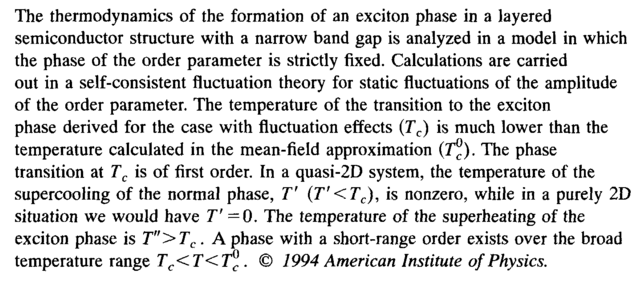|
|

| VOLUME 60 (1994) | ISSUE 4 |
PAGE 280
|
Thermodynamics of electron-hole fluctuations and formation of exciton phase in layered semiconductor structures
Zhukovskii E. A., Tugushev V. V.
The thermodynamics of the formation of an exciton phase in a layered semiconductor structure with a narrow band gap is analyzed in a model in which the phase of the order parameter is strictly fixed. Calculations are carried out in a self-consistent fluctuation theory for static fluctuations of the amplitude of the order parameter. The temperature of the transition to the exciton phase derived for the case with fluctuation effects (Гс) is much lower than the temperature calculated in the mean-field approximation (7^). The phase transition at Tc is of first order. In a quasi-2D system, the temperature of the supercooling of the normal phase, T' (T'<TC), is nonzero, while in a purely 2D situation we would have T' =0. The temperature of the superheating of the exciton phase is T">TC. A phase with a short-range order exists over the broad temperature range TC<T<1°C . © 1994 American Institute of Physics.
|
|


